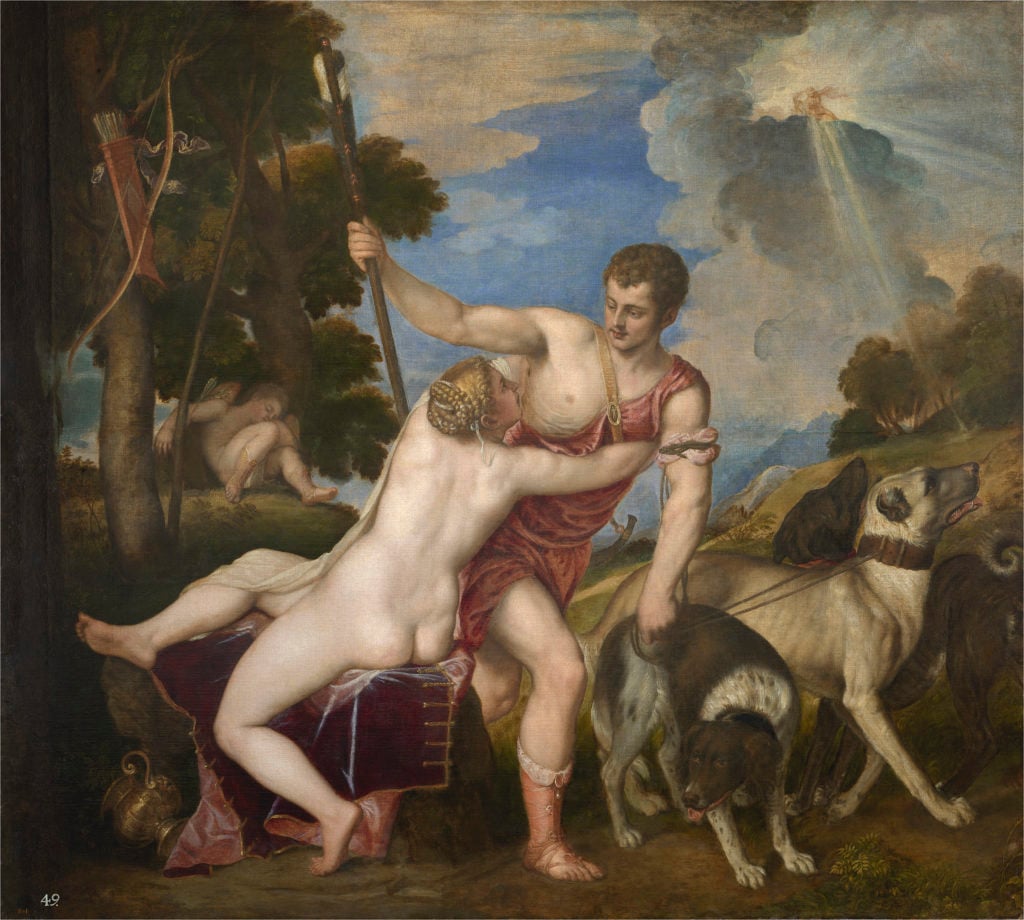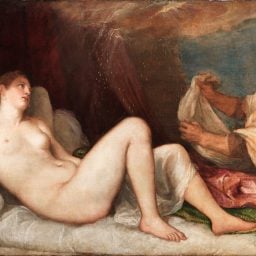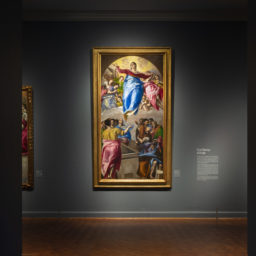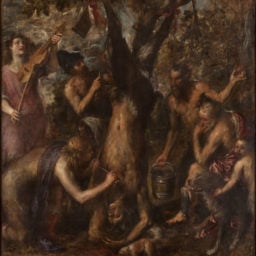Some readers of this article will call it a fish tale, and I guess I would too. The fish in question is a black sea bass—Centropristis striata—and this is the tale of how that New World creature came to show up in The Rape of Europa, an ancient Greek myth painted in the early 1560s, in Venice, by Titian.
That painting is in a revelatory one-room show called “Titian: Love Desire Death,” organized by Matthias Wivel for the National Gallery in London, where it is scheduled to run through June 14 before moving on to other venues. (The National Gallery shut down soon after I saw the exhibition; luckily, all the paintings in it are easy to find online.)
Europa is keeping company in London with the six other pictures, known as poesie or “fables,” that Titian painted on commission for Philip II, prince and then king of Spain—and also ruler of Ireland and England (briefly, as consort to Mary Tudor), of the Dutch and the Flemish and eventually of Portugal and a host of colonized peoples in the Americas, in Africa and even in Asia. (The Philippines were named for him.) I’ve studied all of Philip’s poesie before, here and there, but seeing them as an ensemble in one room, reset into matching frames, completely changed what I felt and thought about them.
Though I have to confess that my fish-out-of-water was not the first thing I noticed.
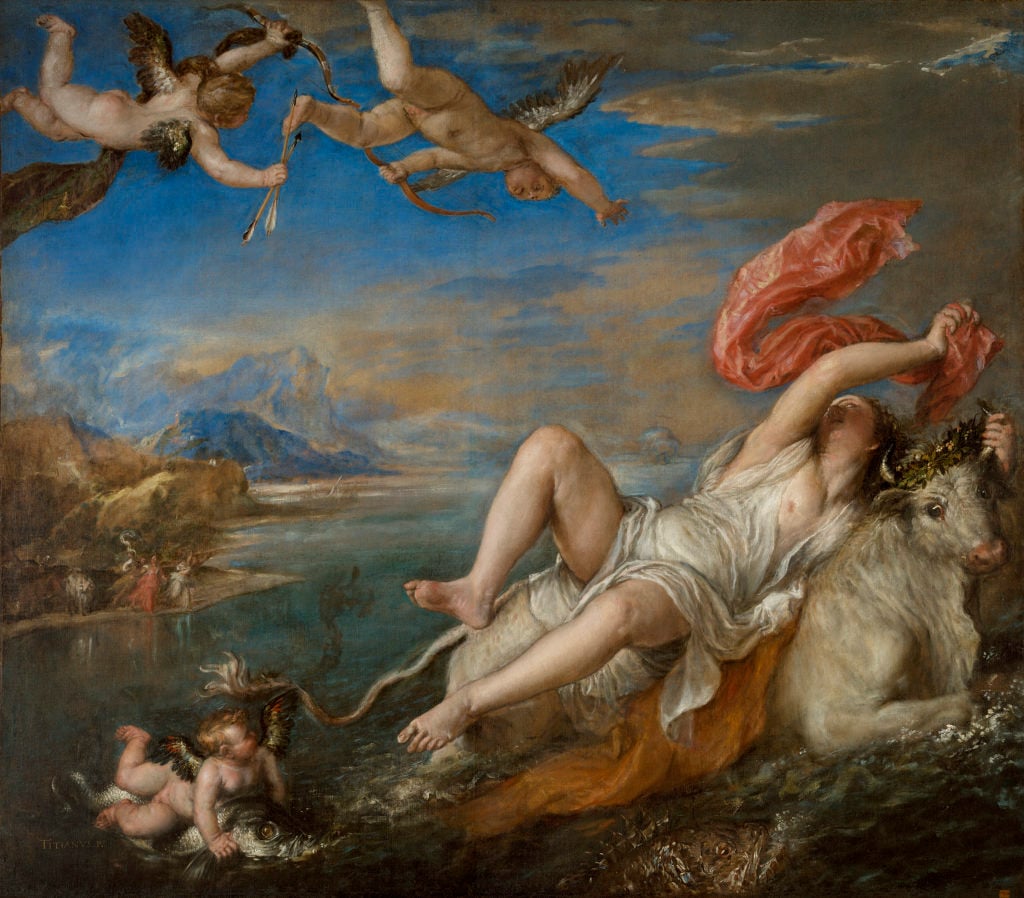
Titian, The Rape of Europa (ca. 1560–62). Collection of the Isabella Stewart Gardner Museum, Boston.
Instead, surrounded on all sides by Philip’s paintings, I was struck by a strong sense that the walls of the gallery had opened up to reveal a world beyond. Titian must have had that effect in mind: He wrote to Philip about planning all the poesie to suit a single chamber; later, planning another series of works, he asked Philip for details about the room they would be shown in, and its lighting, so that the light and space in the room and the paintings would mesh. All that was pretty much the norm for Italian art around 1550—I once wrote hundreds of pages outlining that norm—so what matters about the poesie isn’t that they open up onto a world beyond the wall, but the kind of world I witnessed them opening onto in London.
That was a world of wide open spaces that spread out far beyond the humans in the paintings’ foregrounds, and that offered both threat and promise. And then, under the influence of recent research by the art historian Alexander Nagel, I suddenly realized that those were precisely the new spaces that Titian and his peers were living and thinking in, thanks to the worldwide conquests that the kings of Spain had been making and the new vistas—conceptual, mostly, but also geographic, economic, cultural, even zoological—that their fierce colonizing opened up beyond Europe. The world felt bigger than ever before, with nature more present but also less known; faced with an expanding globe, the European psyche was confronted with a greater sense of promise, but also with less stability. That psyche is at work in the poesie.

Titian, Perseus and Andromeda (ca. 1554–56). Collection of the Wallace Collection, London.
Titian began the commission modestly, with retreads of two older works, but in the first of the great poesie that he designed expressly for Philip—delivered just months after the prince was named king of Spain and its colonies, in 1556—we are shown the moment from Classical myth when the hero Perseus descends from the skies to kill a sea monster about to snack on the Ethiopian princess Andromeda, chained naked to a rock as a sacrifice. For all the appeal of the sexy princess and her savior in the painting’s foreground, the natural setting around and behind them is just as compelling: Fierce cliffs give way to foreign waters made wild by the thrashing monster, splashily rendered in hectic paint. Nature could hardly be more energized and alarming, despite placid blue skies that beckon in the distance. (They were bluer before their paint faded.)
Three years later, when Titian delivered a pair of new paintings to Philip, they contained similar tensions. One depicts the moment when the hunter Actaeon accidentally comes upon Diana, the virgin goddess, bathing with her nymphs in a stream. It illustrates the shock and horror felt on all sides—all nicely captured by Titian. But as my eyes and mind wandered back into the impressively open space beyond this staffage, I couldn’t help noticing, once again, that it was full of unsettled valleys and untamed peaks—very different from the placid Adriatic scenes that Titian had used to back up most of his earlier depictions of Classical myth. Titian made the setting from Actaeon continue, as a single landscape, right into the next painting in his series, showing Diana casting out her nymph Callisto after she was raped and made pregnant by Jupiter. A lightning strike in the rocky background makes clear that nature is troubled here, too.
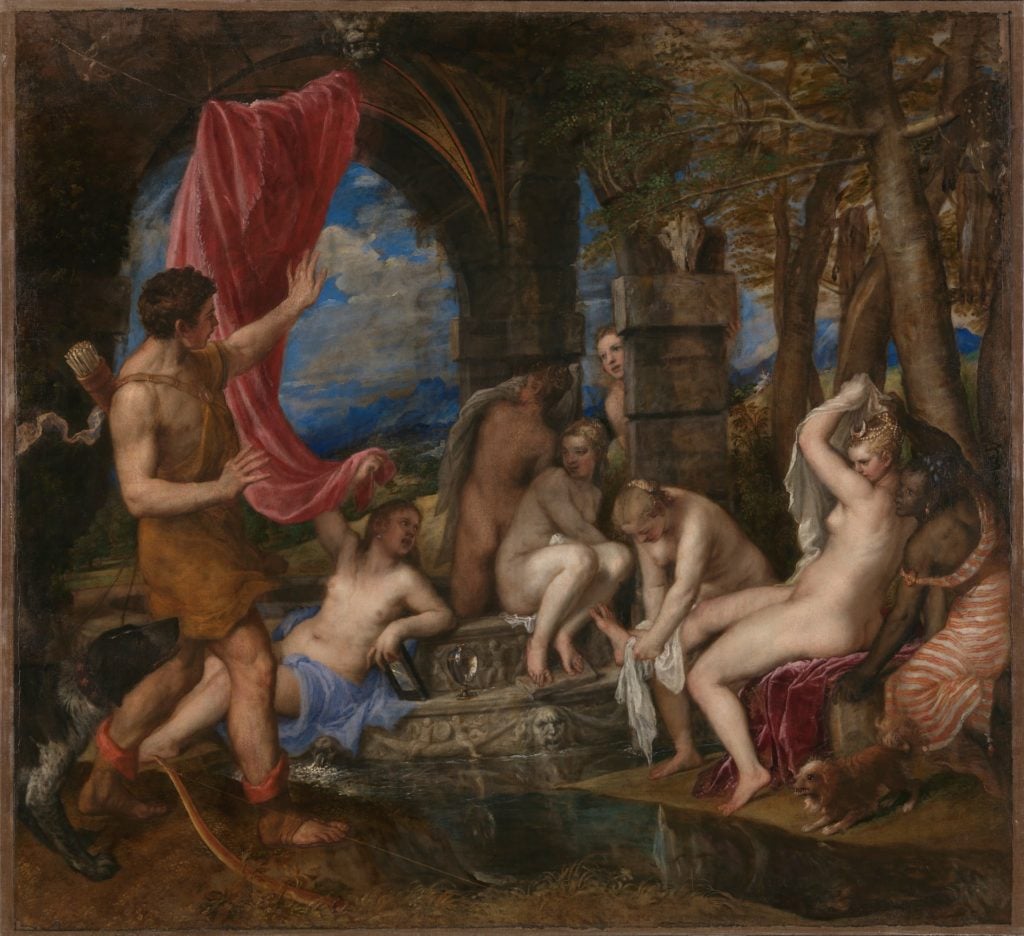
Titian, Diana and Actaeon (1556–59). Collection of the National Gallery London/the National Galleries of Scotland.
That trouble becomes utterly evident—fully foregrounded, you might say—in The Rape of Europa, last of the poesie that Titian sent to the Spanish (and American, and African, and Asian) king, in the spring of 1562, telling Philip it was the culmination of the whole project. The painting is about yet another unfortunate damsel who, this time, goes wandering by the seaside—with wildly threatening peaks in the distance, once again—and decides to pet a particularly handsome and docile-seeming bull that is actually Jupiter on the rape again. Europa finds herself carried away across the roiling waters on the bovine god’s back, into seas that contain such strange creatures as Centropristis striata. That sea bass is distinctly foreign and threatening, with spiny looks that Titian took great care to capture, but as it happens, it is also very tasty, and hints at the resources to be grabbed on new shores.
By the time Titian was painting his myths for Philip, hundreds of ships were heading for the North Atlantic cod banks and sending the salted fish back to feed Europe. Venetian cooks would soon be whipping up their signature baccalà.
Other European adventurers, this time much further south, were sending back the first stores of brilliant cochineal dye, extracted from a New World beetle. Titian used that new color on the cherry-red wrap that billows out, flag-like, from Europa’s hand as Jupiter carries her off. (And let’s not forget that this departing “flagbearer” shared her name with the continent where Philip was crowned. “Europe Heads Abroad” might not be the craziest title for the painting.)
In Titian’s Perseus, the hero’s equally striking cloak is also done in cochineal; it flies from his shoulder like the ensign on a conquistador’s ship.
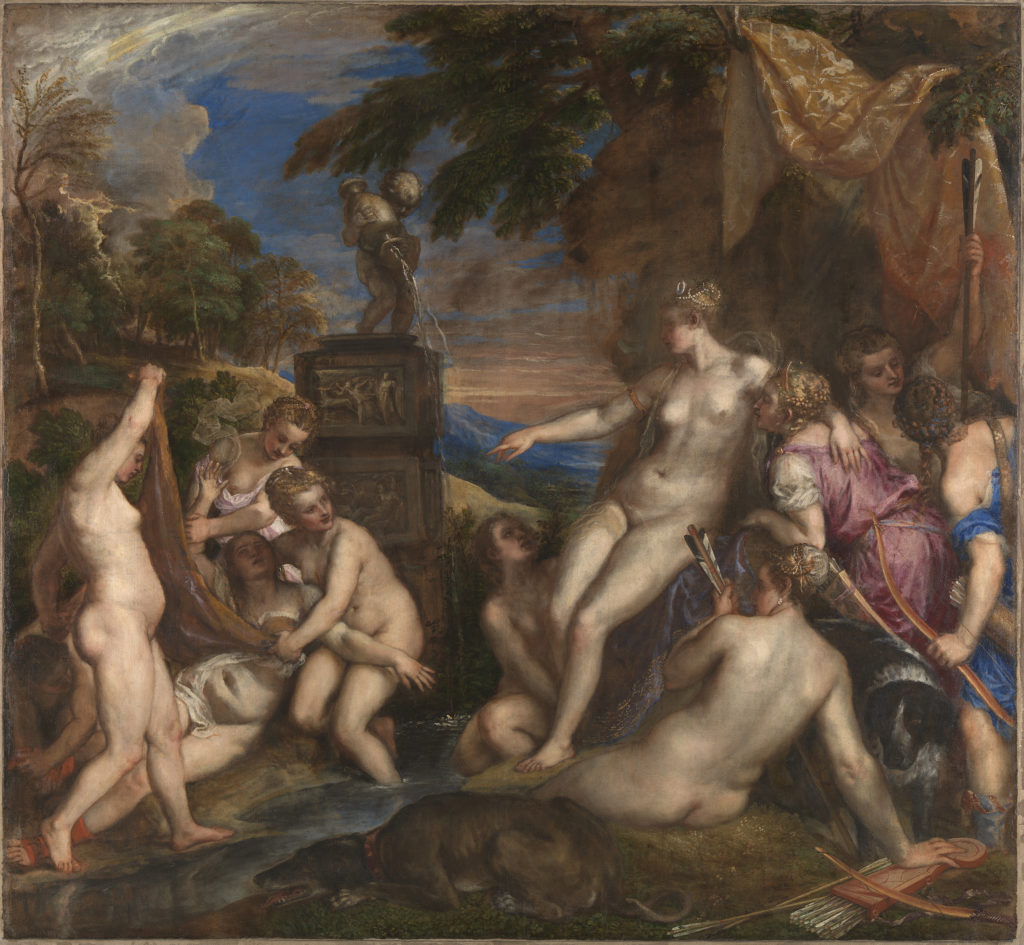
Titian, Diana and Castillo (1556-59). Collection of the National Gallery London/the National Galleries of Scotland.
There’s yet another, more ominous import on view in Philip’s poesie. X-rays of Diana and Acteon reveal that, late in the day, Titian repainted one of Diana’s pink-skinned attendants as a black African, like the ones flowing through Venice at just that moment on their way to slavery in Philip’s New World colonies. African slaves were being shipped in to replace native forced labor since the locals were dying off from European diseases and depredations. The profits they had been forced to produce—the gold and silver they had mined—were what funded Philip’s lavish new buildings and art. The violence that produced those doubloons seems to bubble up into the poesie they bought.
I’m not claiming that Titian deliberately set out to paint hamfisted parables of his patron’s changing realities. (That would be a true fish tale.) I’m asking for his poesie to be understood in terms of the environment they were born into—in terms of the changing contexts, both real and psychic, that most impacted their maker and patron. Titian traveled with Philip and had been knighted by his father; he was deeply invested in the culture and values of his patron’s court, meaning that he was confronted, daily, with that court’s newly enlarged world, both more available and less stable. And that was a world that Europeans could own and stabilize in their art. Thanks to Titian, painted space may extend beyond the walls of Philip’s chamber, but in the end it’s under the control of the painter who opened it up. The flux in these paintings’ expressive brushwork, newly invented by Titian, captures the flux in Philip’s volatile new reality—and in doing so, freezes it.
In 1562, Europe could no longer claim a place at the center of the terrestrial globe. But when Philip stood surrounded by the painted fables that he’d commissioned, he became the fixed point that their untamed worlds revolved around.
